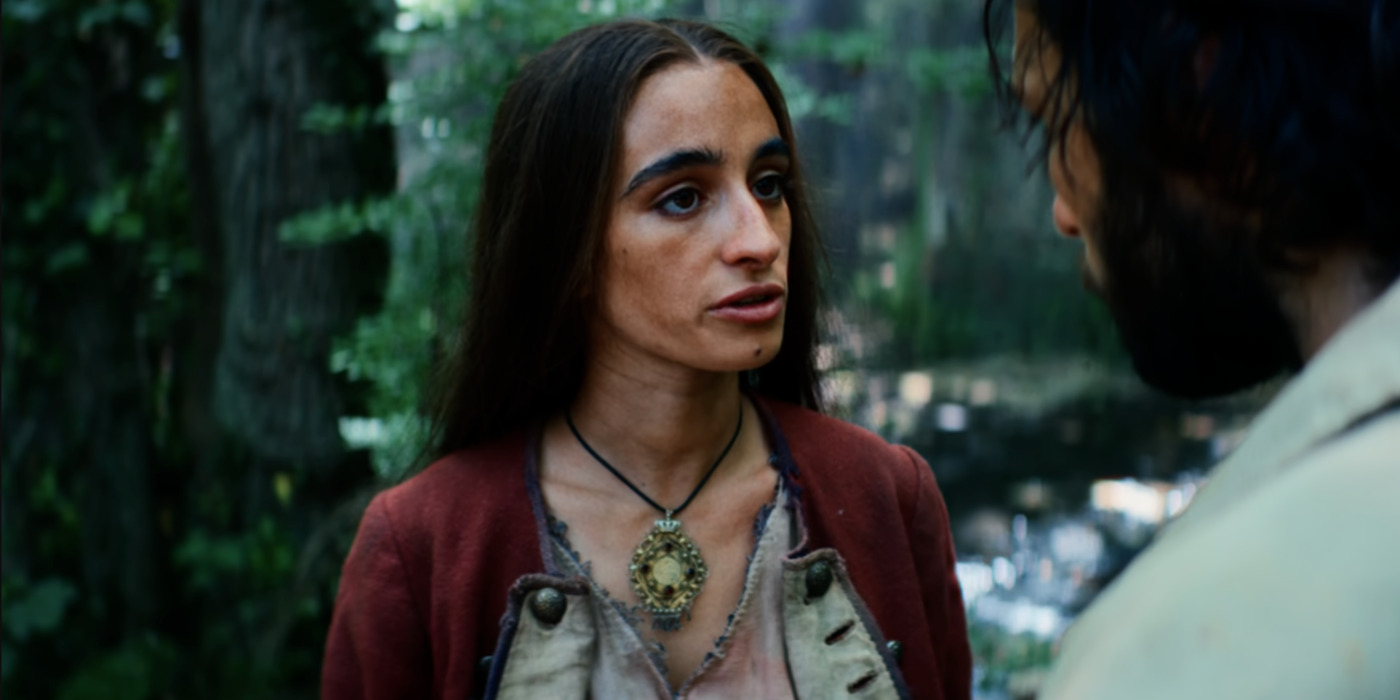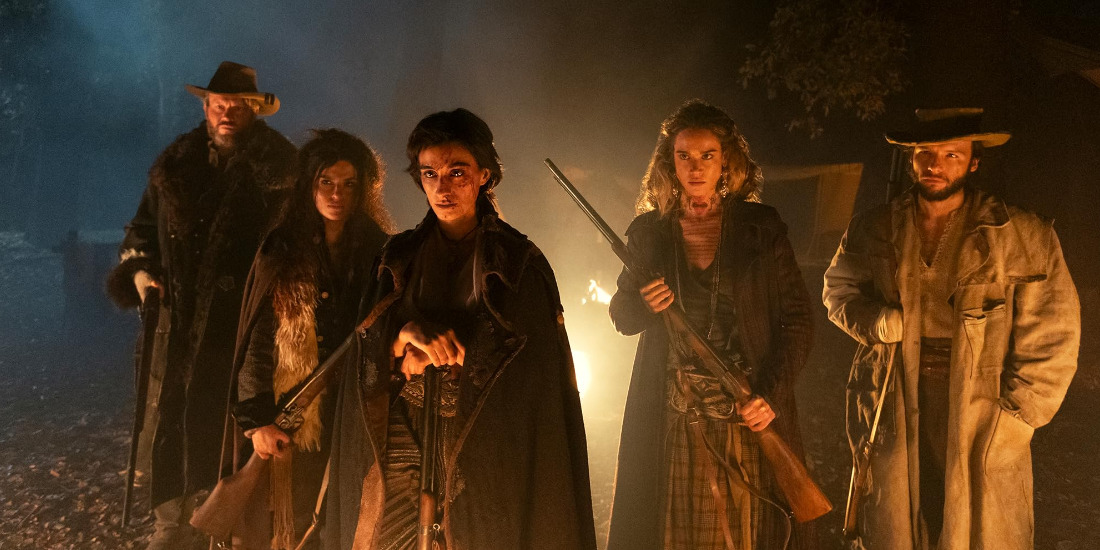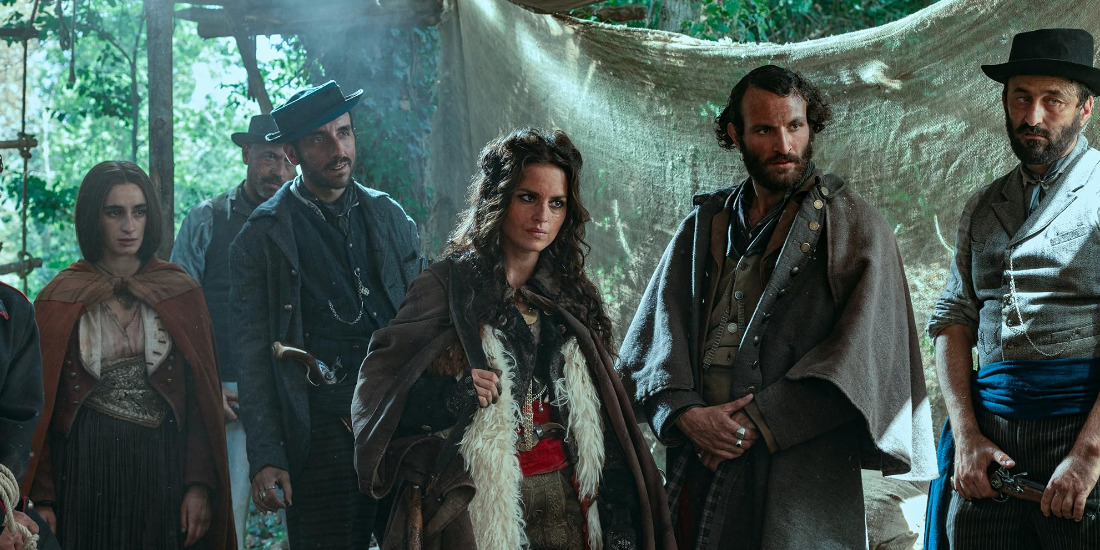Netflix’s action-adventure Italian show, ‘Brigands: The Quest for Gold,’ transports the audience to a historical time when outlaws lurked in the forests and clear feelings of social agitations existed between the peasants and the land-owning bourgeoises. Employing an audacious female brigand, Filomena, at the narrative’s helm, the show follows a gang of bandits who get their hands on a map that might just lead them to shiny treasures of the past. However, military General Fumel carries out a pursuit after the same treasure, creating mountainous trouble for Filomena, her Monaco gang family, and the scoundrel renegade, Schiavone.
The Western-themed story showcases some breathtakingly brilliant backgrounds as it finds the characters constantly surrounded by lush forests, lavish town squares, or villages reminiscent of a stark class disparity. Therefore, witnessing Filomena and her allies’ struggles against their enemies comes naturally accompanied by intrigue regarding the story’s historical setting in time and place.
Brigands: A Story Set in the 1860s Southern Italy
‘Brigands: The Quest for Gold,’ known as ‘Briganti’ in Italian, takes place in the scenic and politically fraught society of Southern Italy— particularly the Basilicata region a couple of years after its annexation to the Kingdom of Italy in 1860. Consequently, as the narrative unfolds— somewhere around 1862— the new shift in socio-economic power after the population lost their land to wealthy aristocrats remains at the story’s center. In the show, the post-unification class struggles between the peasants and the landlords become the thematic thread that ties every character and their storylines together. Thus, the show sports its historical geopolitical setting as one of its most instrumental narrative details.

Italy’s Brigandary, as a form of violent, guerilla-life resistance against the unitary government, thrived as a notable form of social unrest in the post-unification era. However, while the show establishes its ties to the era through its focus on the same, its roots in the early 1860s deepen further through the employment of several real-life historical figures of the time. From central characters like Filomena and Schiavone to the secondary protagonists such as Pietro and Ciccilla, the Monaco Gang leaders, and Michelina, the fearsome female brigand— each character holds a basis in historical figures.
These individuals are known for their respective participations in brigandage in Southern Italy during the early 1860s. Their depictions remain highly fictionalized—with the narrative fabricating ways for these individuals to cross paths without adhering to historical accuracy. Even so, the historical Italian personalities’ joint existence and shared life experiences as brigands remain typical to the specific period setting. Specifically, the narrative pays attention to the visible female representation within the brigands. Although the show’s representation of these historical female bandits diverges from reality in certain significant ways, it only arrives as a result of the story’s dramatized and fictionalized nature.

Furthermore, the same treatment is extended to other historical figures, embuing the entire history-inspired narrative with a layer of fictionalization. As such, the show utilizes reality to highlight the prevalence of women’s contribution toward the resistance movements— going as far back as the 1800s— while simultaneously equipping history to convey themes of solidarity in liberation.
Likewise, the narrative’s constant condemnation of the Piedmontese institution through its characters remains reminiscent of the hostile and skeptical sentiments carried throughout Southern Italy toward the same. Consequently, the depiction of the bourgeois society and Fumel’s militaristic character enforces concepts of socio-economic oppression and iron-fisted regimes— themes that remain intrinsic to the show’s storyline. Thus, even though the events that occur on-screen in Filomena and her allies’ deadly adventures lack a firm basis in Southern Italy’s history, the elements for the overarching narrative are all mined from the 1860s.
For the same reason, the actual historical and geographical setting of ‘Brigands: The Quest for Gold’ remains one of its defining features as it consistently uses the same reference for its narrative. Thus, even the show’s visual environment— through costuming, set designing, dialogues, and other narrative details, shapes itself to accommodate the story’s 1860s Southern Italy setting.
Read More: Netflix’s Brigands The Quest for Gold: Where is the Show Filmed?


You must be logged in to post a comment.